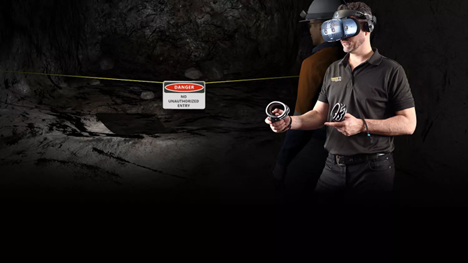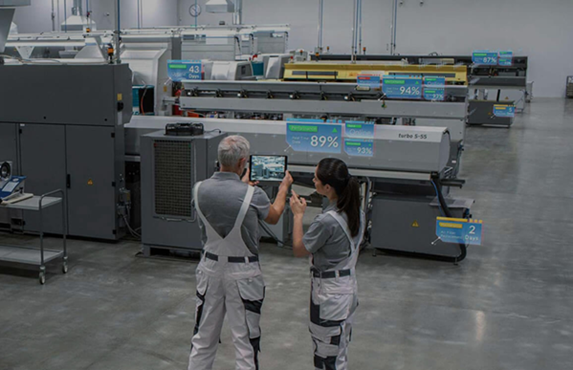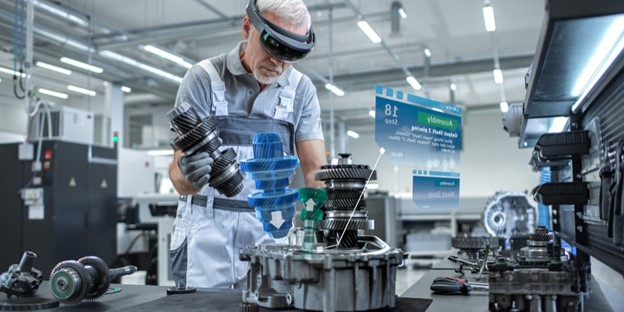Nuclear, Power & Mining in VR
Virtual Reality (VR) technology is spearheading transformative changes across both the nuclear power and mining sectors, reshaping training, safety, and operational efficiency paradigms. Within nuclear power plants, VR simulations offer a dynamic training environment where operators can engage with realistic scenarios, from emergency responses to routine maintenance procedures.
This immersive training ensures operators are well-equipped to handle complex situations effectively, without the risks inherent in traditional training methods. Furthermore, VR is instrumental in the design and simulation of nuclear facilities, allowing engineers to visualize equipment layouts, identify potential hazards, and optimize plant design for both efficiency and safety. By leveraging VR simulations, operators and engineers alike can fine-tune processes, mitigate risks, and ensure regulatory compliance seamlessly.
Similarly, in the mining industry, VR is revolutionizing training practices by providing miners with hands-on experience in a virtual environment. Through VR training programs, miners can familiarize themselves with equipment operations, safety protocols, and emergency procedures, enhancing their skills and preparedness for real-world mining operations. Safety remains paramount in the mining sector, and VR plays a crucial role in facilitating emergency response drills and safety training exercises.


Nuclear, Power & Mining in AR
In the nuclear, power, and mining industries, Augmented Reality (AR) technology is transforming traditional operations, offering innovative solutions to enhance safety, efficiency, and productivity.
In the nuclear sector, AR is utilized for various purposes, including maintenance and emergency preparedness. Technicians can overlay digital instructions onto physical components, facilitating complex maintenance tasks and reducing the risk of errors. AR simulations enable operators to practice emergency procedures in a realistic environment, ensuring they are well-prepared to handle potential crises.
Similarly, in power generation, AR is revolutionizing equipment monitoring and maintenance processes. Engineers can utilize AR to overlay diagnostic information onto machinery, allowing for quick identification of issues and more efficient troubleshooting. This real-time data visualization enhances decision-making and minimizes downtime, ultimately improving operational efficiency.
In the mining industry, AR plays a crucial role in exploration and safety protocols. Geologists can leverage AR to visualize underground structures and identify potential mineral deposits with greater accuracy. Additionally, AR-based safety protocols overlay hazard warnings onto physical environments, reducing the risk of accidents and ensuring a safer working environment for miners.


Nuclear, Power & Mining in MR
Mixed Reality (MR) technology is revolutionizing operations in the nuclear, power, and mining sectors by seamlessly integrating virtual and real-world environments. In the nuclear industry, MR is employed for comprehensive training simulations, enabling technicians to learn and practice operating complex systems safely. It also facilitates remote assistance during maintenance activities, where experts can provide real-time guidance to onsite personnel, thereby enhancing efficiency and minimizing risks.
In the power industry, MR enhances asset management by providing operators with immersive visualizations of power plant infrastructure, facilitating proactive maintenance, and reducing downtime. Moreover, MR-based training programs offer hands-on learning experiences for technicians and engineers, ensuring they are proficient in handling critical tasks. Additionally, MR aids in the planning and execution of renewable energy projects by offering accurate site assessments and enabling collaborative decision-making among stakeholders.
In the mining sector, MR is utilized for safety training, allowing miners to undergo immersive simulations of hazardous scenarios and practice emergency response procedures. It also supports exploration efforts by providing geologists and engineers with virtual environments to analyze geological data and plan excavation projects more effectively. Furthermore, MR-based visualization tools enable stakeholders to visualize underground environments and identify potential hazards before commencing mining operations.


